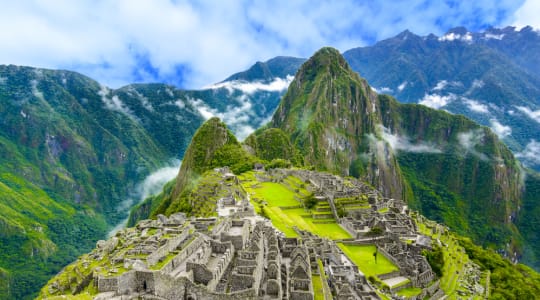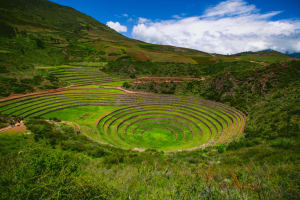
Machu Picchu is an ancient Inca citadel located in the Andes Mountains of Peru. It was built during the 15th century and is considered one of the most famous and iconic archaeological sites in the world.
The site is located on a mountain ridge overlooking the Urubamba Valley and was abandoned after the Spanish Conquest in the 16th century. It was not rediscovered until 1911, when American historian Hiram Bingham stumbled upon it while searching for the lost city of Vilcabamba.
Machu Picchu is divided into two main sections: the agricultural and urban sectors. The agricultural sector is made up of terraced fields and irrigation canals that were used to grow crops such as corn, potatoes, and quinoa. The urban sector is made up of temples, palaces, and houses that were built from large stone blocks that were carved to fit together perfectly without the use of mortar.
Some of the most notable structures at Machu Picchu include the Temple of the Sun, the Temple of the Three Windows, and the Intihuatana stone, which is believed to have served as a solar clock or calendar.
Machu Picchu was declared a UNESCO World Heritage Site in 1983 and is visited by millions of tourists every year. Its remote location and the mystery surrounding its purpose and abandonment have made it a fascinating and enduring symbol of the Inca Empire.
Explore Near Machu Picchu
Discover 5 attractions and 4 cities within 75km. Perfect for planning day trips, finding connecting flights, or discovering new destinations to explore during your visit.
Nearby Attractions & Places to Visit
5 destinations within 24.4km - 72.0km from your location





Nearby Cities Worth Exploring
4 destinations within 63.9km - 74.8km from your location
Cross-Border Adventures Near Machu Picchu
Discover cross-border adventures near Machu Picchu. Explore neighboring countries with similar attractions and extend your travel experience across borders.












